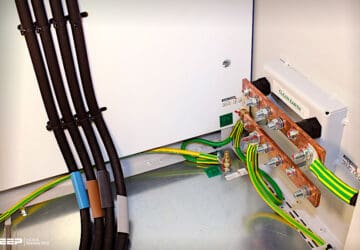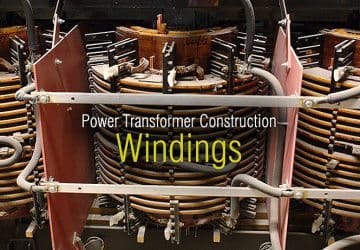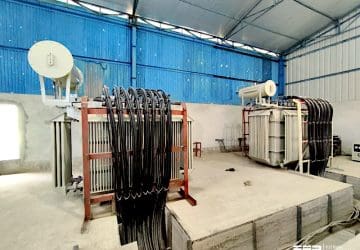Using Tap Changers to Match the System Voltage
A transformer’s rated voltage may not match the system voltage exactly, or it may be necessary to raise or lower the output voltage to supply a certain load. In these cases, a portion of a winding can be removed or… Read more
Aug 31, 2012 | By Edvard Csanyi

Purpose of Shielded Isolation Transformer
A shielded transformer is a two-winding transformer, usually delta–star connected and serves the following purposes: – Voltage transformation from the distribution voltage to the equipment’s utilization voltage. – Converting a 3-wire input power to a 4-wire output thereby deriving a separate stable… Read more
Aug 29, 2012 | By Edvard Csanyi

What is a Floating Neutral and how does it affect the power distribution
If the Neutral Conductor is opened, broke or lost at either of its source side (distribution transformer, generator) or at load side (distribution panel of a consumer), the distribution system’s neutral conductor will “float” or lose its reference ground Point…. Read more
Aug 27, 2012 | By Jignesh Parmar

Power Transformer Construction – Windings
Continued from tech. article: Power Transformer Construction – Core The windings consist of the current-carrying conductors wound around the sections of the core, and these must be properly insulated, supported and cooled to withstand operational and test conditions. The terms winding… Read more
Aug 24, 2012 | By Edvard Csanyi

Power Transformer Construction – The Core
The construction of a power transformer varies throughout the industry. The basic arrangement is essentially the same and has seen little significant change in recent years, so some ofthe variations can be discussed in this article. The core, which provides… Read more
Aug 23, 2012 | By Edvard Csanyi

Protecting Oil Type Transformer with Buchholz Relay
Buchholz relay is a gas-actuated relay installed in oil immersed transformers for protection against all kinds of faults. Named afteri ts inventor mr. Max Buchholz (1875–1956) in 1921, relay is used to produce an alarm in case of incipient (i.e.slow-developing) faults… Read more
Aug 16, 2012 | By Edvard Csanyi

Principles of Transformers in Parallel Connection (part 2)
In ideal parallel operating of power transformers, the current in each transformer is directly proportional to its capacity, and the arithmetic sum equals one-half of the total current. This is rarely accomplished because to minor discrepancies in transformers. Nonetheless, some… Read more
Aug 08, 2012 | By Jignesh Parmar

Principles of Transformers in Parallel Connection
For supplying a load in excess of the rating of an existing transformer, two or more transformers may be connected in parallel with the existing transformer. The transformers are connected in parallel when load on one of the transformers is… Read more
Aug 06, 2012 | By Jignesh Parmar

Delta-Star Transformer Connection Overview
The Delta-Star transformer connection is utilized to increase voltage levels and is frequently applied at the end or beginning of high-tension power transmission systems. The primary is configured in a delta arrangement, while the secondary is arranged in a star… Read more
Jul 10, 2012 | By Jignesh Parmar

Delta-Delta Transformer Connection Overview
In this type of connection, both the three phase primary and secondary windings are connected in delta as shown in the Figure 1: The voltages on primary and secondary sides can be shown on the phasor diagram (Figure 2): This… Read more
Jul 06, 2012 | By Jignesh Parmar

Typical noise levels in power substation
Equipment noise levels may be obtained from manufacturers, equipment tendering documents, or test results. The noise level of a substation power transformer is a function of the MVA and BIL rating of the high voltage winding. These transformers typically generate… Read more
Jul 05, 2012 | By Edvard Csanyi

Autotransformer Connection Explained
An ordinary transformer consists of two windings called primary winding and secondary winding. These two windings are magnetically coupled and electrically isolated. But the transformer in which a part of windings is common to both primary and secondary is called… Read more
Jul 02, 2012 | By Jignesh Parmar

Meggering (insulation resistance testing) of dry-type power transformer
The insulation resistance test (meggering) is of value for future comparison and also for determining if the transformer is to be subjected to the applied voltage test.The winding insulation resistance test is a DC high voltage test used to determine… Read more
Jun 27, 2012 | By Edvard Csanyi

Transformer Extra Losses Due To Harmonics
Non-linear loads, such as power electronic devices, such as variable speed drives on motor systems, computers, UPS systems, TV sets and compact fluorescent lamps, cause harmonic currents on the network. Harmonic voltages are generated in the impedance of the network… Read more
Jun 22, 2012 | By Edvard Csanyi

ZigZag Transformer Connection Overview
The zigzag connection of tranformer is also called the interconnected star connection. This connection has some of the features of the Y and the ∆ connections, combining the advantages of both. The zigzag transformer contains six coils on three cores…. Read more
Jun 15, 2012 | By Jignesh Parmar


